2019
Can design break complacent normalcy that peripheral development has gained? In a rapidly urbanising and transitioning India, design needs to act as a method to frame problem questions better before jumping to solutions.
Leveraging approaches of Critical Design a narrative is designed set in Future India 2030. The narrative aims to suspend the viewer from the present and give them a taste of a possibility. This possibility means to provoke the viewer into breaking their state of normal and hence, alter their perception of the current state of rapidly urbanising India.
Speculative Stories from Shahpur Jat
Can design break complacent normalcy that peripheral development has gained? In a rapidly urbanising and transitioning India, design needs to act as a method to frame problem questions better before jumping to solutions.
Leveraging approaches of Critical Design a narrative is designed set in Future India 2030. The narrative aims to suspend the viewer from the present and give them a taste of a possibility. This possibility means to provoke the viewer into breaking their state of normal and hence, alter their perception of the current state of rapidly urbanising India.
Introduction
Summary
Research & Insights
Inquiry & Speculation
Ideas
Stories
Tools
Credits
Summary
‘Delhi is the capital of what will be the most densely populated country in the world by 2024.
What happens when 40% of its population moves to urban areas for better standards of living by 2035?
There is a visible hyper-inequality in today's atmosphere. The implications of development efforts historically, have manifested itself into intangible aspects like inequality of access, economic opportunity, and stability. Peripheralisation has resulted in the formation of slums, urban-villages and minority colonies or transition settlements, which is now normalised.
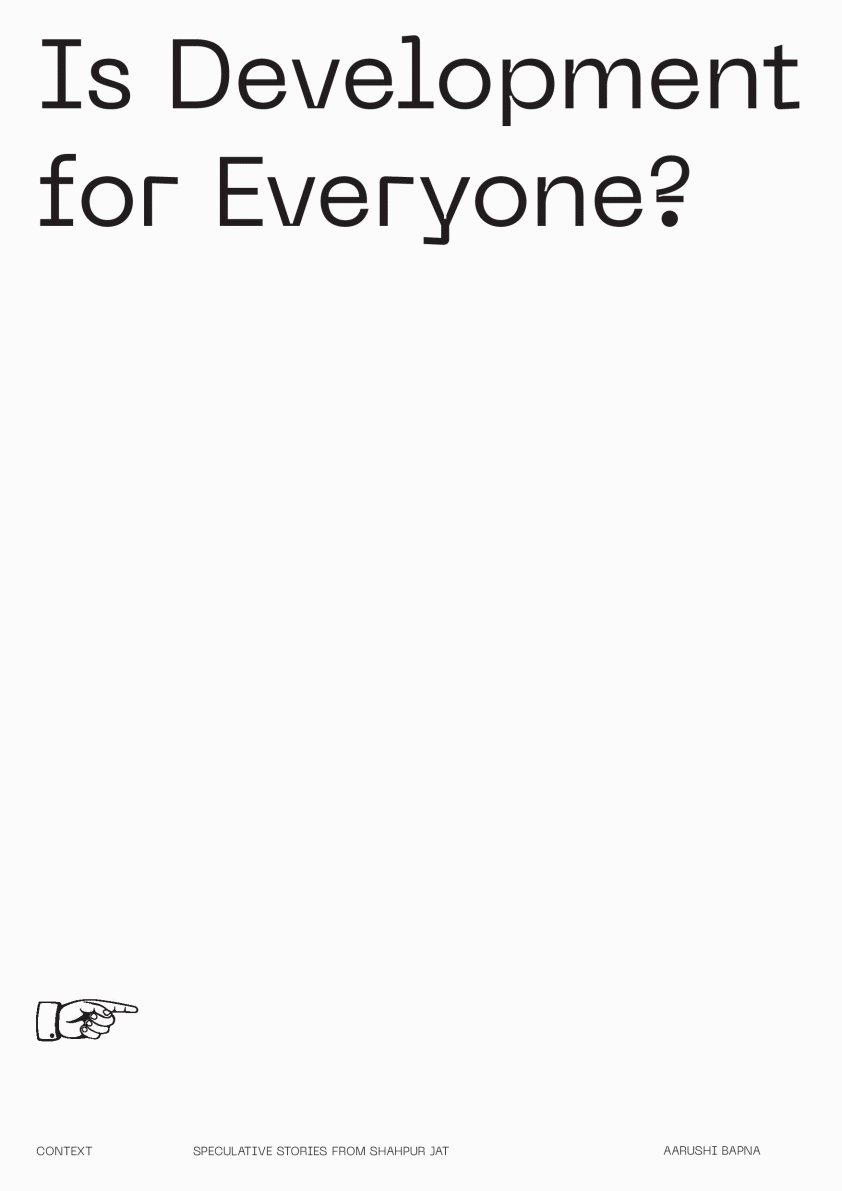
<?> some questions that guided this inquiry based project <?>
There is a visible hyper-inequality in today's atmosphere. The implications of development efforts historically, have manifested itself into intangible aspects like inequality of access, economic opportunity, and stability. Peripheralisation has resulted in the formation of slums, urban-villages and minority colonies or transition settlements, which is now normalised.
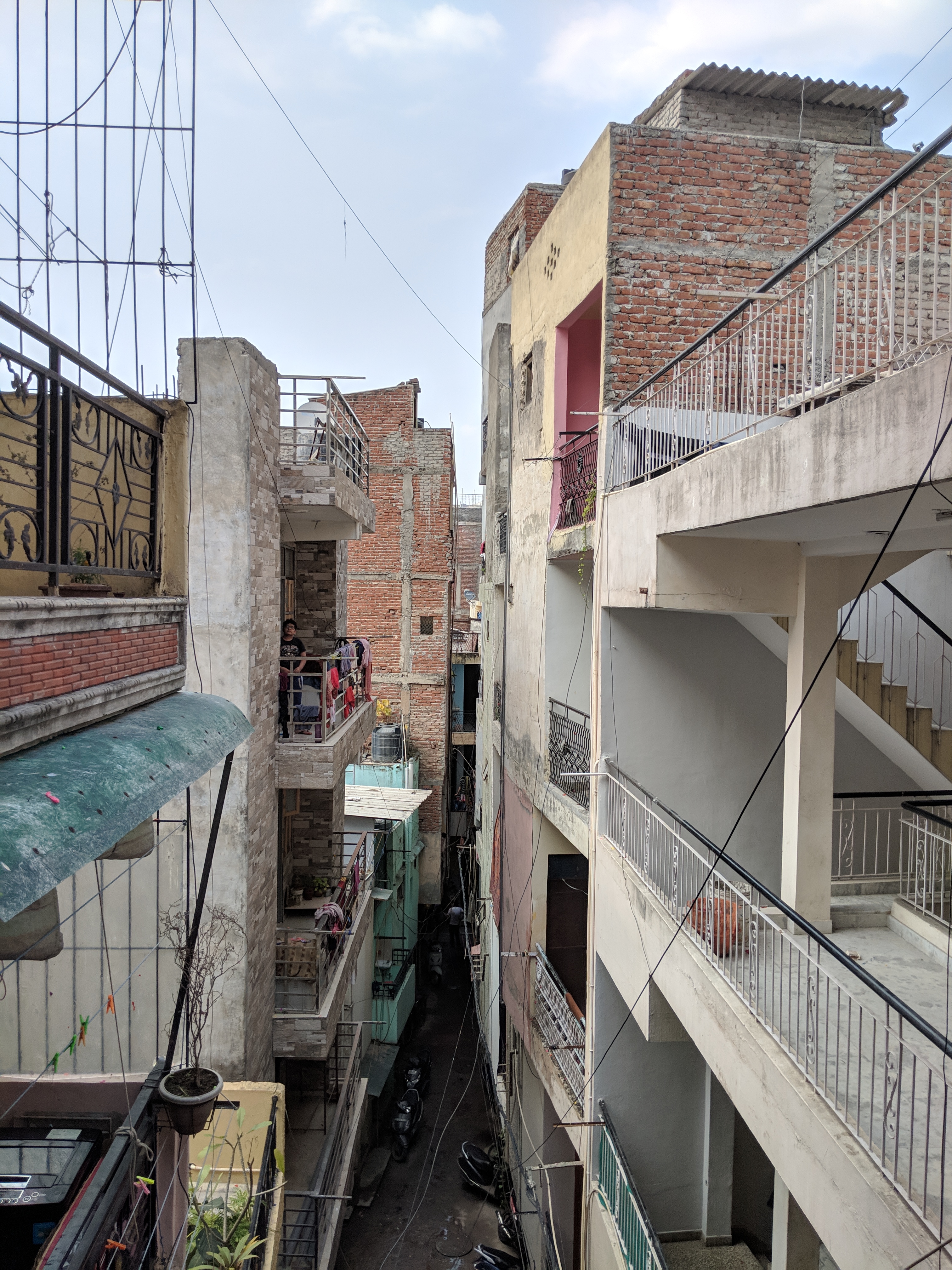

(above) images of various urban villages in Delhi
‘Speculative Stories from Shahpur Jat’ informs from approaches of Ethnography, Strategic Foresight, World Building, Speculative Design and Communication Design, performing transdisciplinarity in its aim, approach and output. The questions that guided the project are ‘How can Design contribute to this transition that will be? Can Design break the normalcy that it is? Can design provoke?
Future as provocation has been harnessed here. This has been imagined in various ways and illustrated through collages, short stories and a film. These articulations are diegetic prototypes from the future and aim to provoke multiple stakeholders.
![]()
︎︎︎ kinds of provocation, excerpt from documentation of the project
In the process, various tools have emerged.'The Change Map' is a tool that has been designed to help map changing contexts and the factors that contribute to these changes and transitions, which build desirable future trajectories. The 'Beam Futures Diagram' is another tool that allows one to imagine contextual Indian and possibly subaltern futures.
![]()
a. the change map
![]() b. beam futures diagram
b. beam futures diagram
![]()
c. indian moods
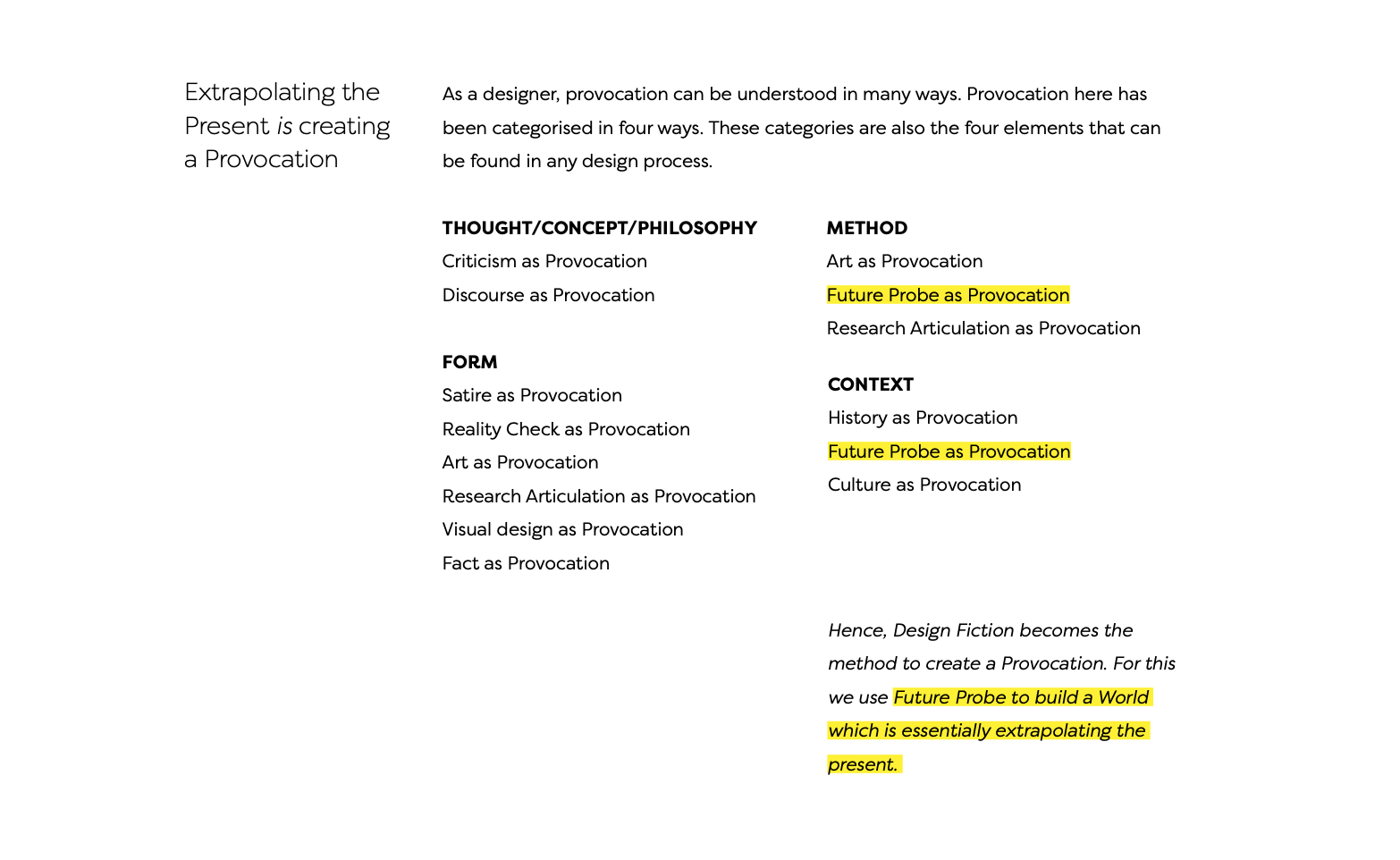
︎︎︎ kinds of provocation, excerpt from documentation of the project
In the process, various tools have emerged.'The Change Map' is a tool that has been designed to help map changing contexts and the factors that contribute to these changes and transitions, which build desirable future trajectories. The 'Beam Futures Diagram' is another tool that allows one to imagine contextual Indian and possibly subaltern futures.
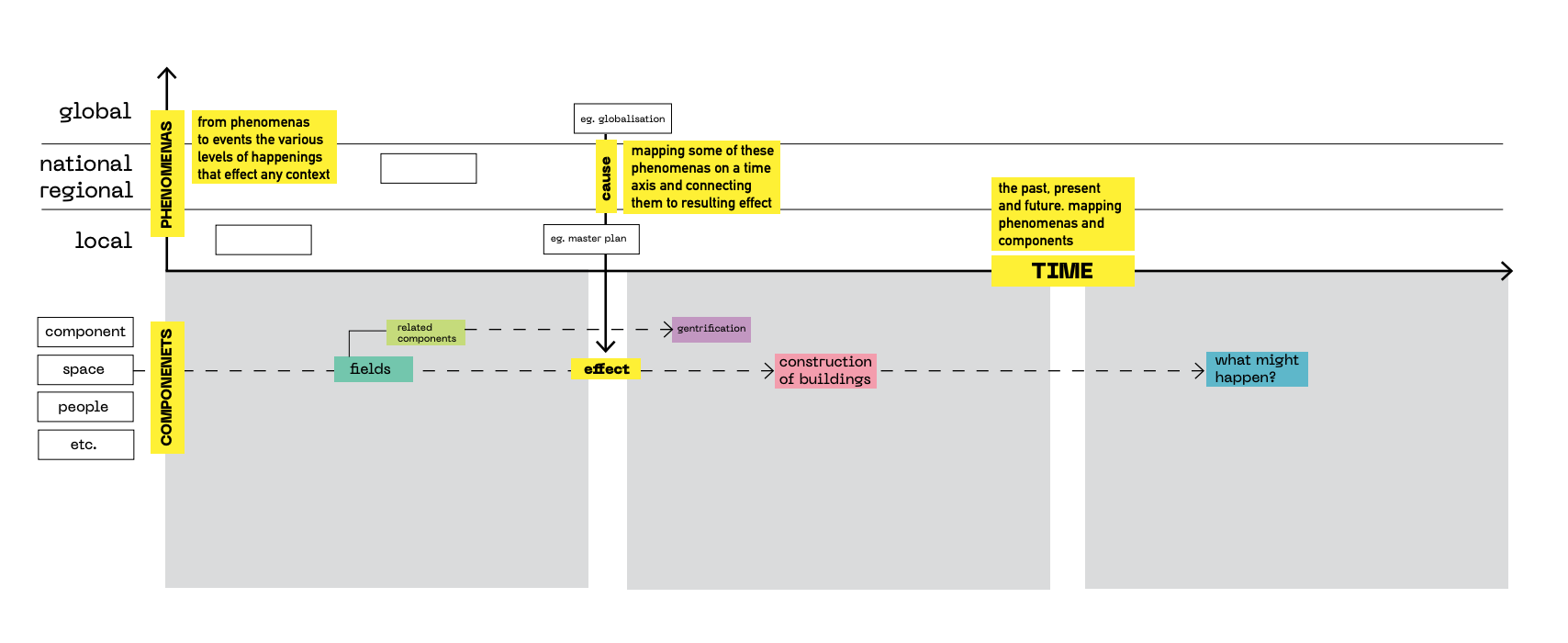
a. the change map
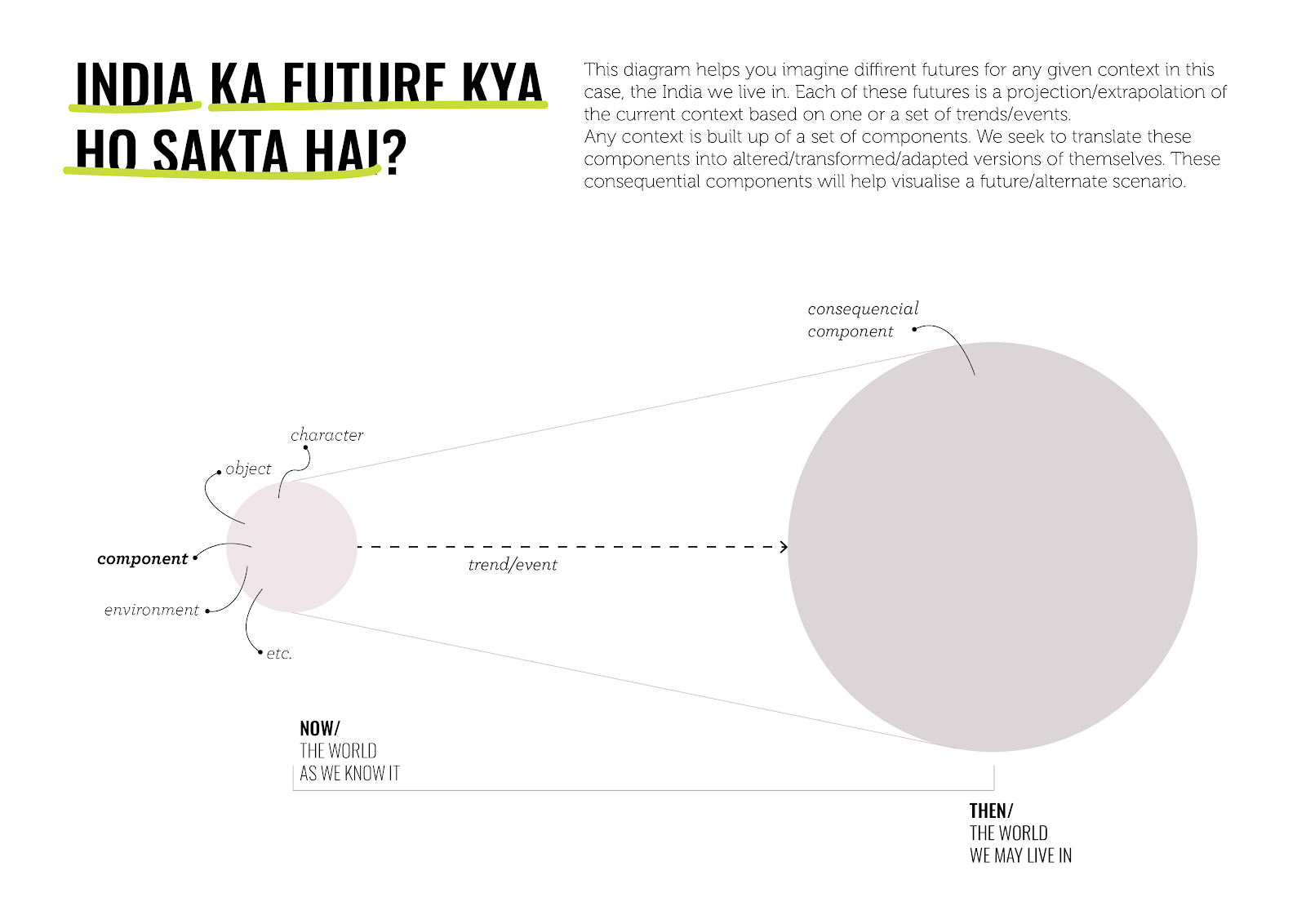 b. beam futures diagram
b. beam futures diagram
c. indian moods
The project seeks to stir, seek and start conversations.
Research & Insights
The project emerged and was grounded in research to inform every aspect of it, from the context, content, form and overall design.

2.1 aerial view of a very contrasting delhi, organised and organic.
UNDERSTANDING CONTEXT
Treemouse on Shahpur Jat (Delhi) : a settlement that poses to be at the periphery of infrastructural development.
An ethnographic field study was conducted here, over a period of two months to understand the settlement and the `inter-social relationships in Shahpur Jat.
"Charting a path of development that is sensitive to the population's diverse socio-economic landscape is a very different challenge."
Treemouse on Shahpur Jat (Delhi) : a settlement that poses to be at the periphery of infrastructural development.
An ethnographic field study was conducted here, over a period of two months to understand the settlement and the `inter-social relationships in Shahpur Jat.
Shahpur Jat is the glamorous 'Fashion Hub' of Delhi, however it also imbibes within itself sweatshops, factories and a history of marginalisation of the people who reside there. There are various socio-economic classes that co-exist, the original inhabitants of the village who have the monopoly over land ownership, the tenants who own boutiques, design studios and restaurants and the migrants, who work in garment factories and contribute to various other businesses. The over all gentrification of the urban village, brings social distancing and alienation based on class and social grouping.
The insights and new knowledge built from this study helped in creating a nuanced narrative that could potentially be provocative. The ethnography thereby became the grounding force of the proposed narrative/s.
[Urbanisation in developing countries is characterised by large increases in population. It takes two paths: through the expansion of existing urban bodies by ‘engulfing’ adjoining villages into their territory and through the independent transformation of rural areas into urban areas. Delhi is a classic example. And Shahpur Jat is an illustration of this urban phenomenon.]
An Urban Village, therefore, becomes a microcosm of the urban condition. One, constantly in flux, latching onto the culture that it once lived in and trying to catch up with what it would become. Constantly contradicting itself. Building relationships with the present but held back by the past.
SUBJECT OF STUDY
The project aimed at studying a
settlement in Delhi which posed to
be in the periphery of infra-structural
development. The insights and new
knowledge built from this study would
help in creating a nuanced narrative that
would help in creating a provocation.

